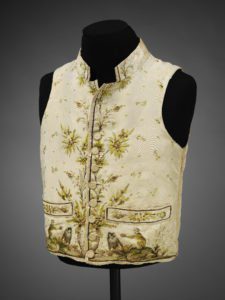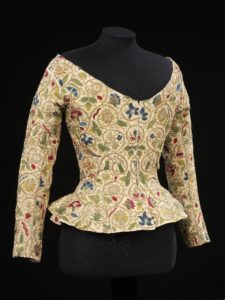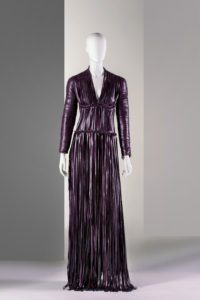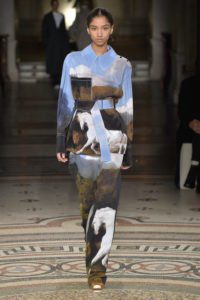‘Fashioned from Nature’ is an exhibition at the Victoria and Albert Museum in London that was inaugurated on April 21st, close to the Fashion Revolution week. I had intended so many times to talk about it but there was always something that led me to write about other topics.
However it is never too late, especially because the exhibition lasts until 27 January 2019, so for those are planning a trip to London, maybe around the holidays, here is something that deserves to be seen.
‘Fashioned from Nature’ traces the complex relationship between fashion and the natural world since 1600, showing how fashionable dress repeatedly draws on the beauty and power of nature for inspiration. At the same time it explores how fashion’s processes and constant demand for raw materials damage the environment, featuring campaigners and protest groups that have effectively highlighted this issue such as Fashion Revolution, with the goal of sensitizing brands, companies, designers and public opinion on the need for a profound change in production, purchasing and consumption practices related to the sector.

In other words, more than 400 years of fashion to explore what we can learn from fashion practice in the past, practice that inspires the contemporary designers and reveals decorative uses and unusual materials, often coming from the animal world (at the time it was conceivable, they used what was available, today no longer).
Nature inspiring muse as in the man’s waistcoat, expertly embroidered with a pattern of playful Macacque monkeys or as in the women’s jacket from the early 1600s, intricately embroidered with designs of pea-shoots and flowers
The exhibition also focuses closely, arranged chronologically, on the main fibers used in the 17th and 18th centuries, that is silk, flax, wool and cotton, going on to chart the expansion in international trade, import of precious materials, and later introduction of man-made materials, which brought fashionable dress to the masses but also contributed to the air and water pollution to which the textile industry is such a significant contributor (we remind that fashion is the second most polluting industry after oil).


A bold display of posters, slogan clothes and artworks show how protest movements have helped draw attention to the harmful side of fashion, together with figures like Vivienne Westwood, pioneer of the fight against climate change and Katharine Hamnett.
Customising and re-wearing clothes are highlighted through a vintage outfit and a jacket customised by London designer Katie Jones for fashion writer and editor Susie Lau to wear during Fashion Revolution Week 2015.


There are jeans produced with a minimal amount of water (we already talked about them, are those by G-Star Raw), the creations of Stella McCartney, always a supporter of vegan and cruelty-free fashion and the dress that Tiziano Guardini made with a bio-material derived from the grape waste, produced by the Italian start-up Vegea.
And what about the beautiful evening dress that actress Emma Watson worn at MET Gala 2016, a Calvin Klein look made of recycled plastic bottles with separate parts, that was intended to be re-worn in different ways. The look was created as part of the ‘Green Carpet Challenge’ with Eco-Age, an initiative to pair sustainability with glamour.


Centre for Sustainable Fashion (CSF) at London College of Fashion, UAL, present two interactive installations which explore ‘Fashion Now’ and ‘Fashion Future.’ ‘Fashion Now’ takes five iconic contemporary fashion pieces and using sensors, visitors are able to explore the unseen impact on nature of the construction, making, wearing and discarding of each item. ‘Fashion Future’ immerses viewers into the fashion world of the future, inviting us to question what fashion means and show us a future we are yet to imagine.


![Mono[PA6] by Freitag, a prova di economia circolare](https://eco-a-porter.com/wp-content/uploads/2024/05/freitag_monopa6_hero_master_16zu9_fin_01.2_0-218x150.jpg)

















